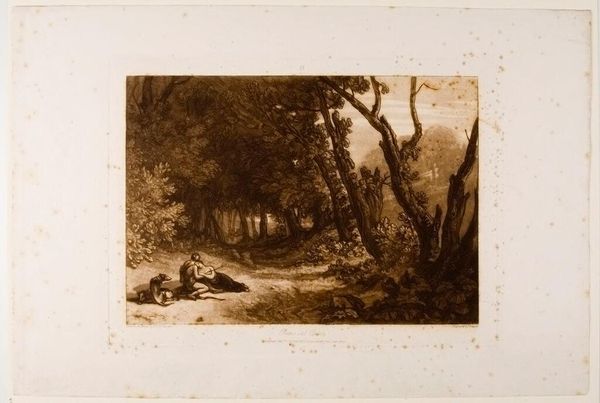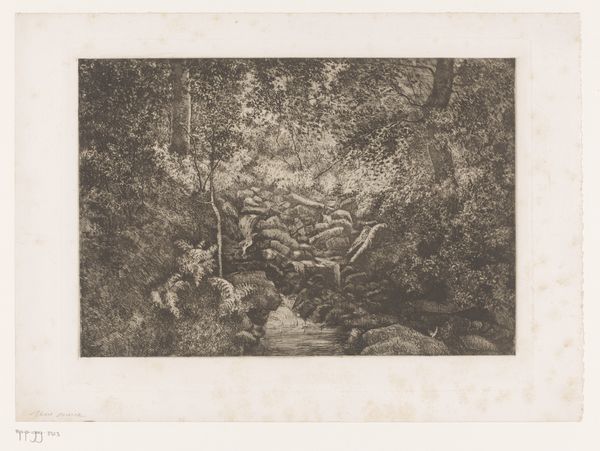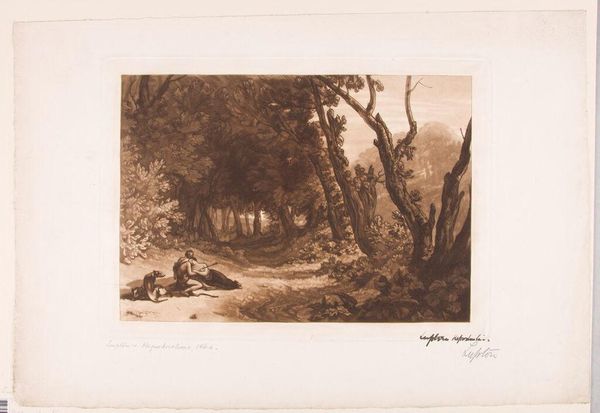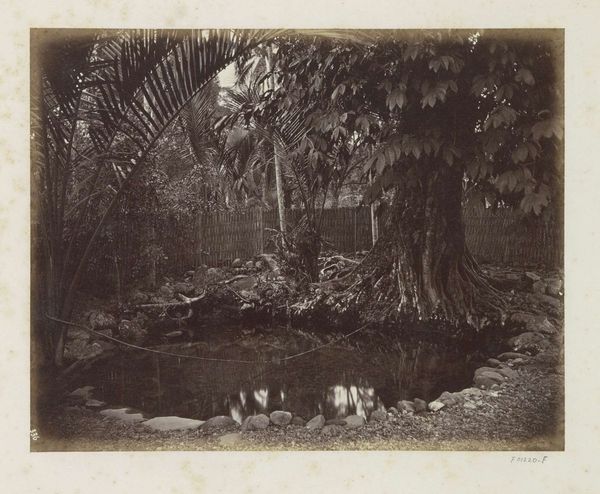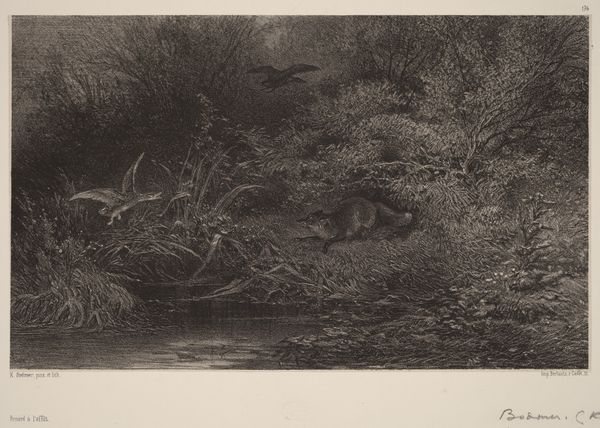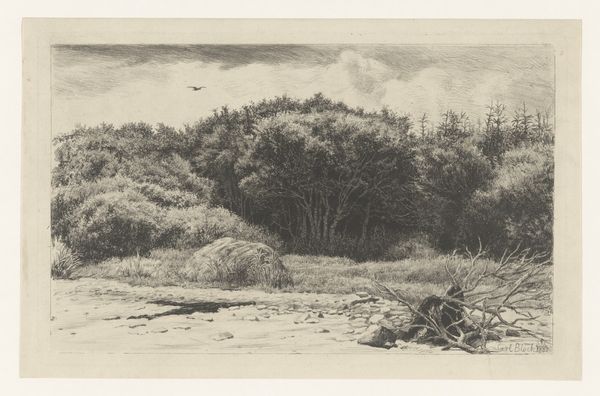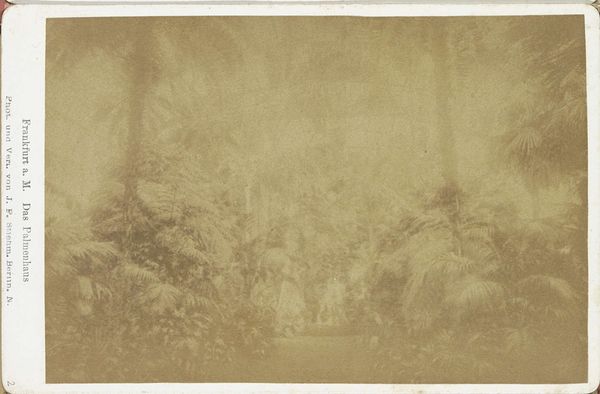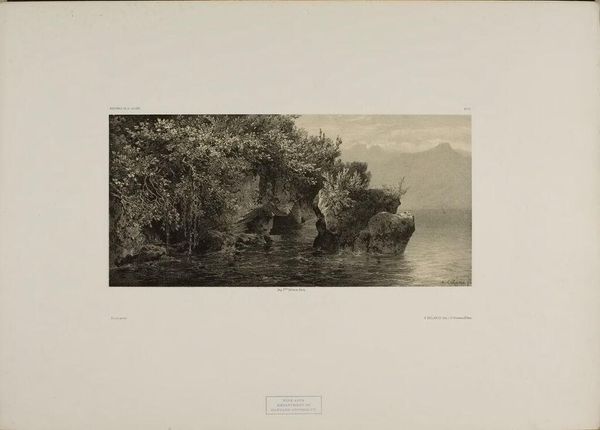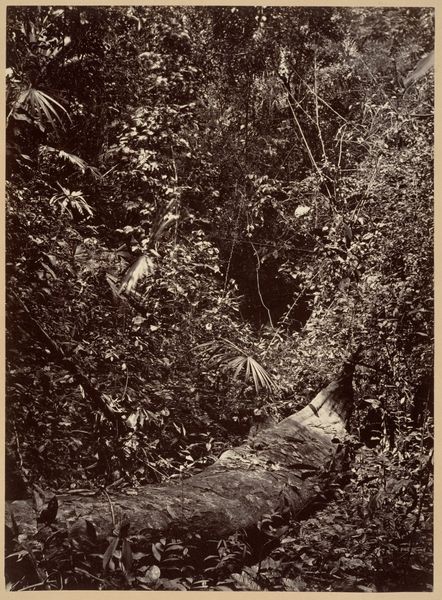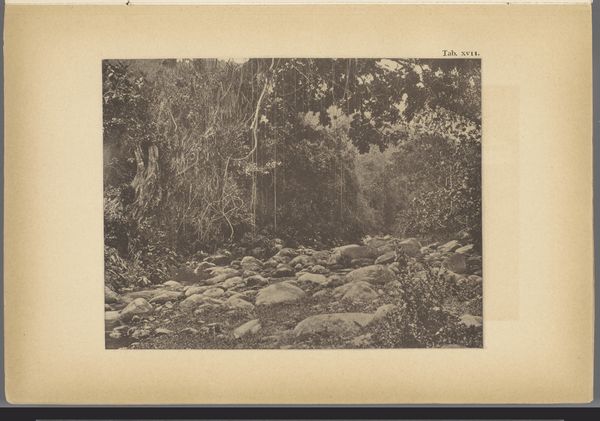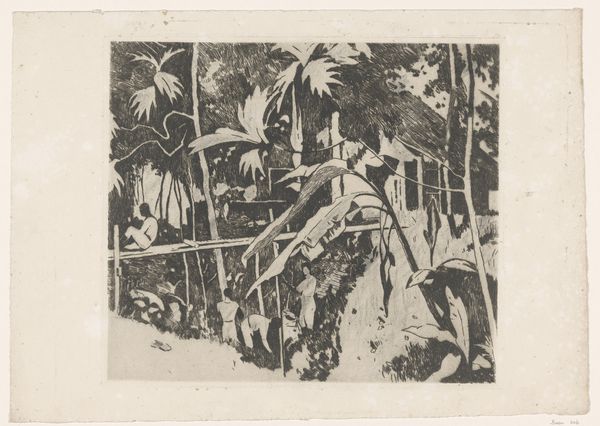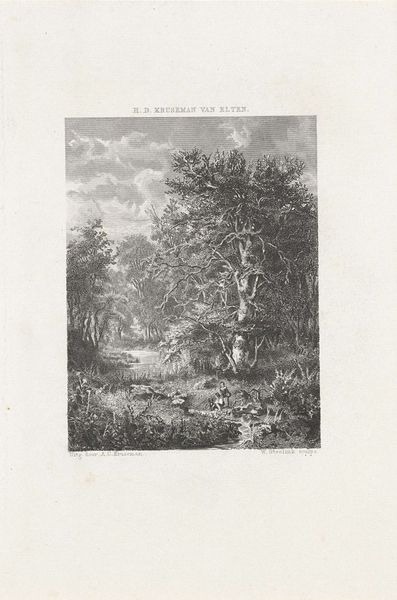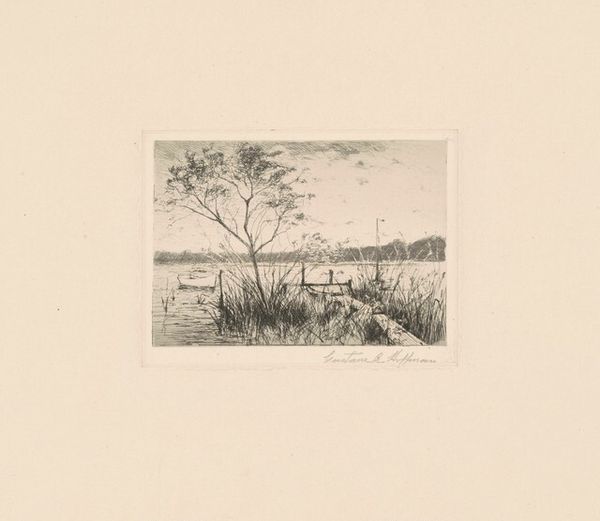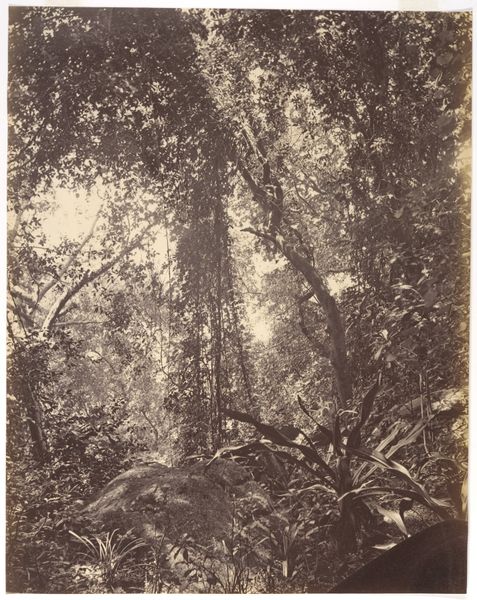
Dimensions: height 177 mm, width 228 mm
Copyright: Rijks Museum: Open Domain
Curator: This is "Germanic sacrificial place", created between 1865 and 1870 by Hendrik D. Jzn Sluyter, currently held in the Rijksmuseum. It is rendered as a print, specifically through engraving. Editor: A dark romance, I'd say! The tones create this pervasive somber mood that, when contrasted with the delicate realism of the scene, is really evocative. What a powerful use of grayscale! Curator: Indeed. I find the piece so compelling because of how Sluyter orchestrates tonal relations to emphasize structure and narrative. The chiaroscuro heightens the drama, directing the eye to the small group performing the ritual. Editor: Right, and thinking materially, engraving allows for such detail—I'm imagining Sluyter's painstaking labor as he incises lines onto the metal plate, building up texture to define form. It shows a craft process mediating high art. Curator: Precisely. The texture achieved also creates atmospheric perspective, rendering space through meticulous modulation of tone. If you look carefully at the figures themselves, their forms lack the solidity present in the natural elements around them. This highlights a conceptual aspect—perhaps their impermanence relative to the enduring power of nature. Editor: I see what you mean, that ghostly affect against the "realism" of the trees. Speaking of materials, it would be interesting to research the sources for Sluyter's printmaking— were the inks locally sourced? Who consumed these images, and how did access to them reinforce social dynamics within 19th-century Netherlands society? Curator: Excellent considerations! And if we extend this to structural observations, note how the stream dissects the space, creating visual tension. What could that binary signify, philosophically or culturally? Does the flowing water demarcate worlds, physical and spiritual? Editor: So while it appears realistic on its surface, it certainly triggers further avenues for analysis into material, culture, ritual practice and beliefs in its context. A layered work. Curator: Absolutely. It compels viewers, inviting us into the dialogue between tangible reality and intangible, speculative dimensions of human belief and cultural identity.
Comments
No comments
Be the first to comment and join the conversation on the ultimate creative platform.
